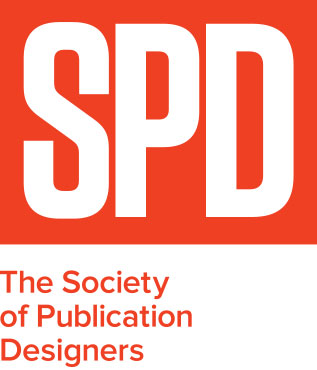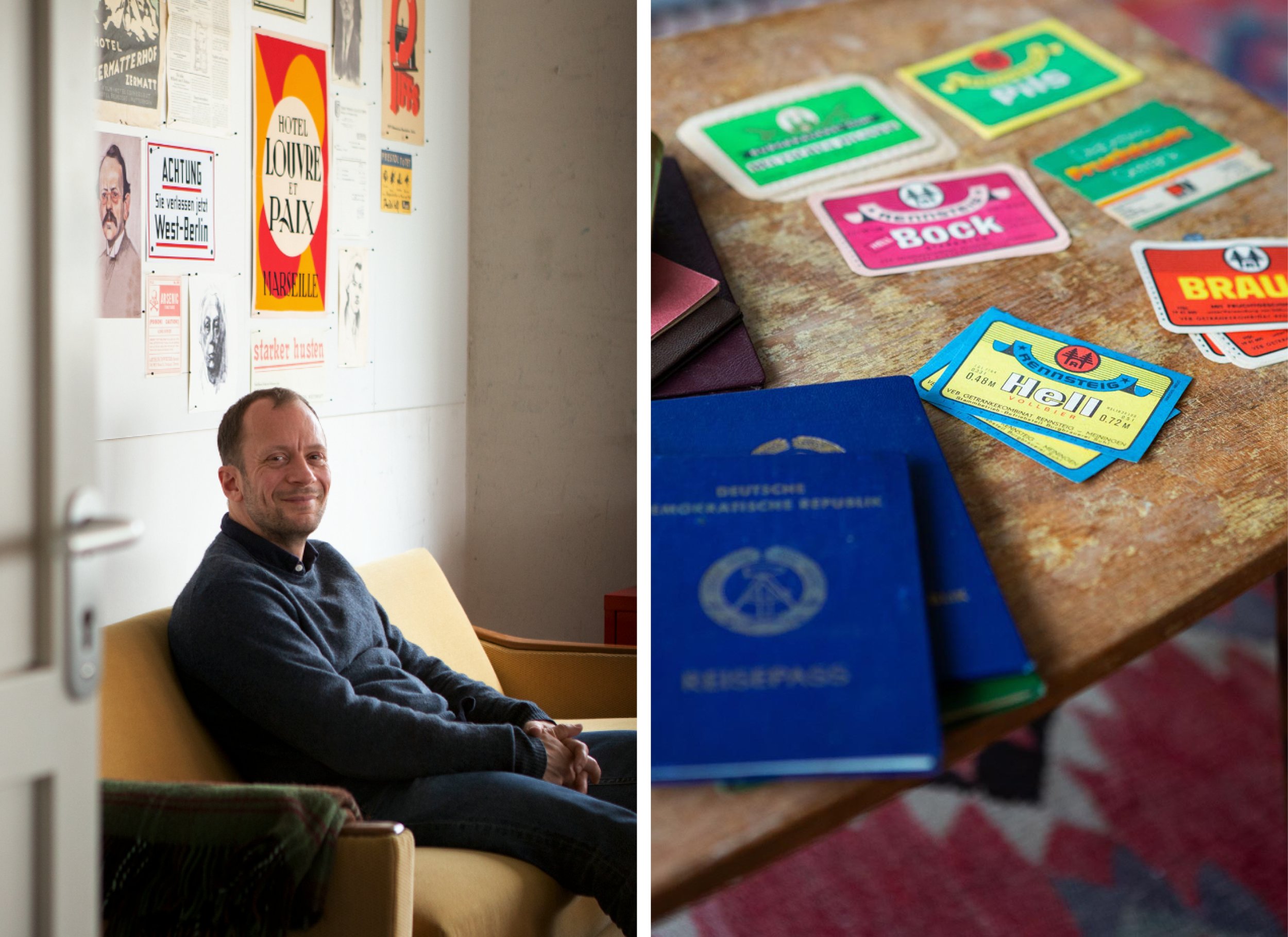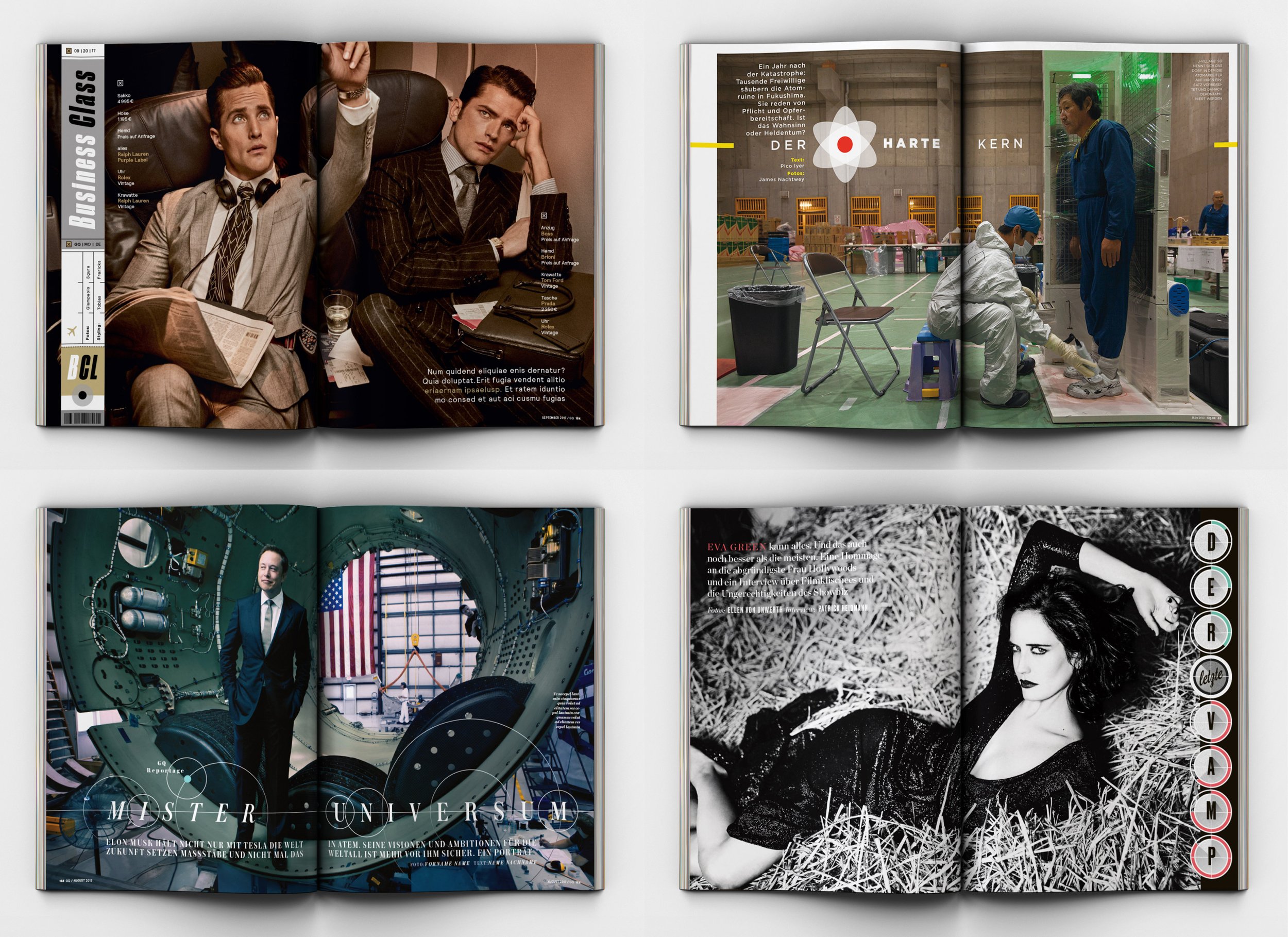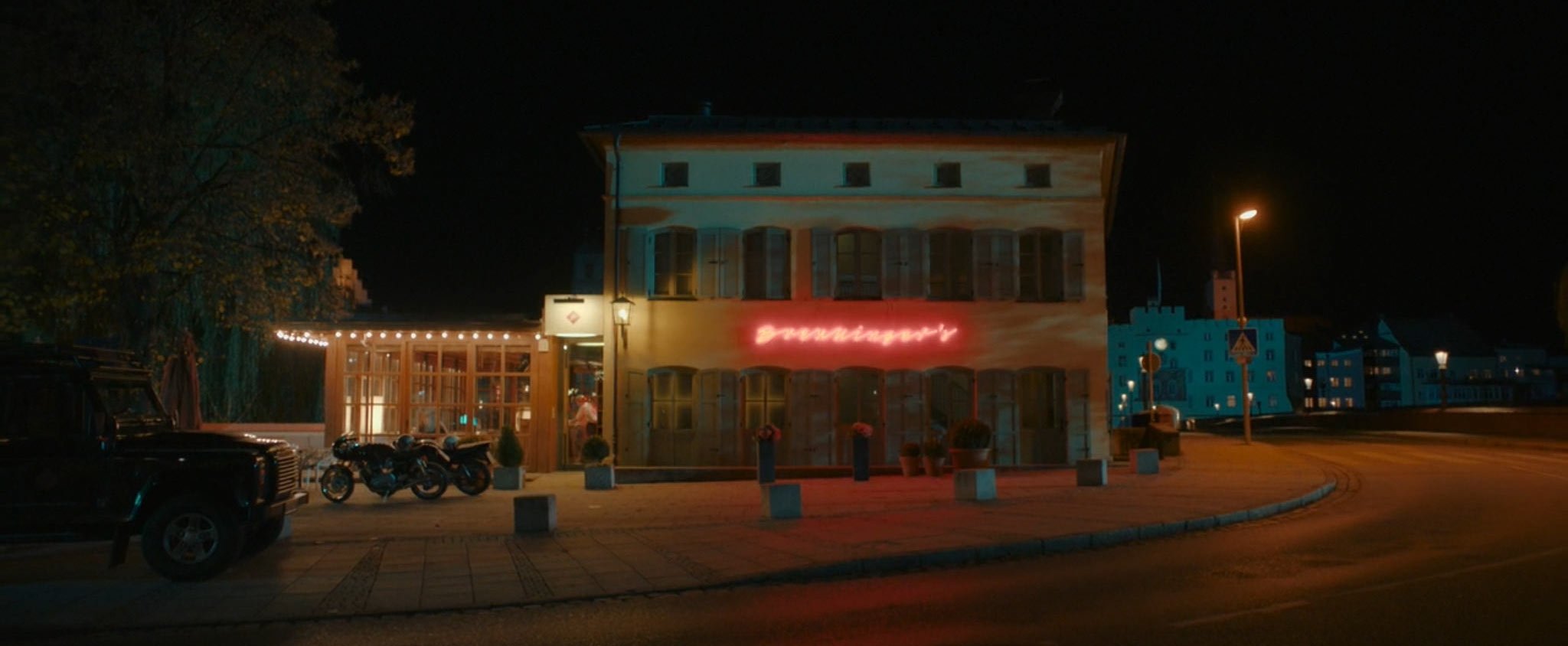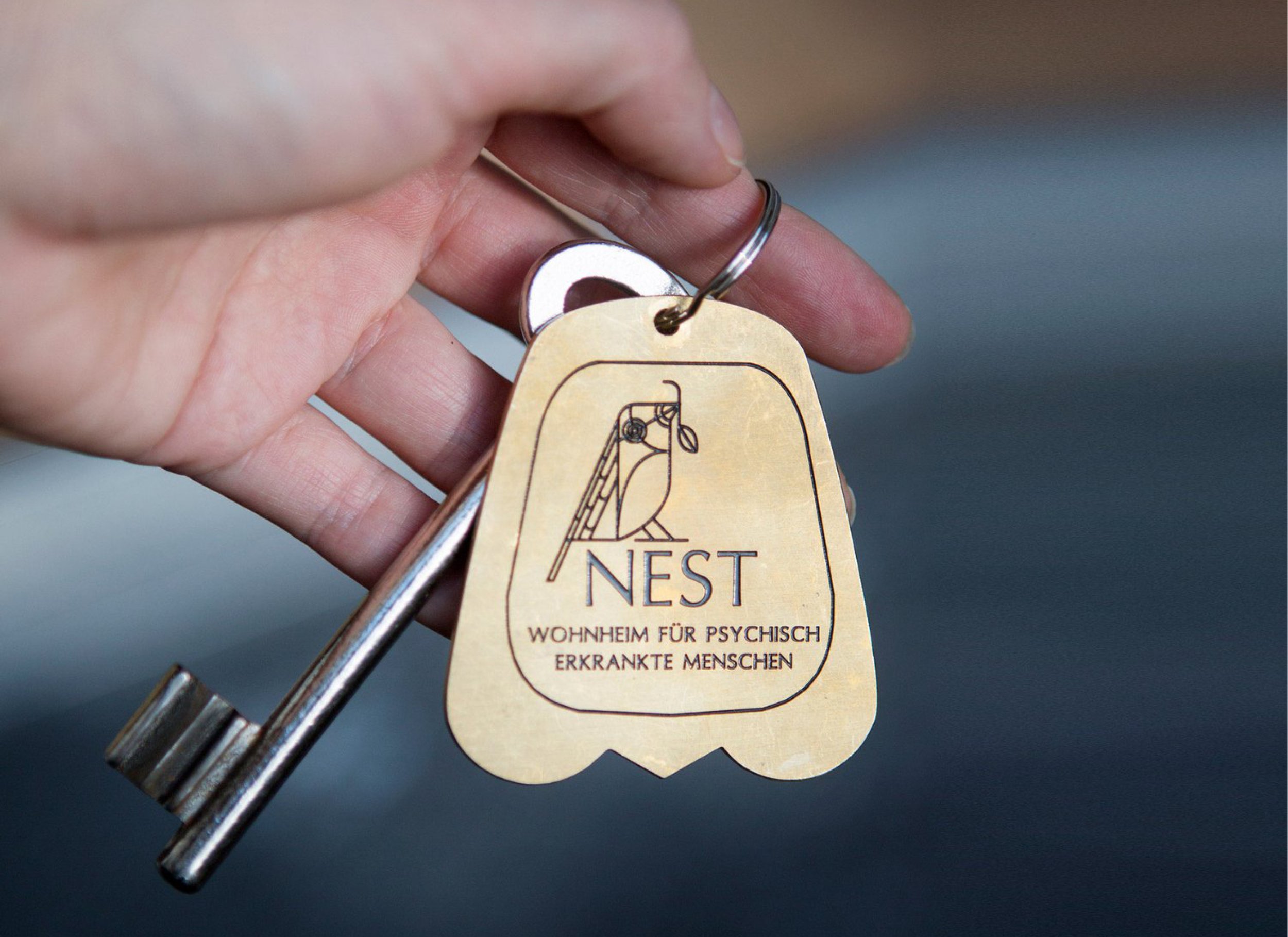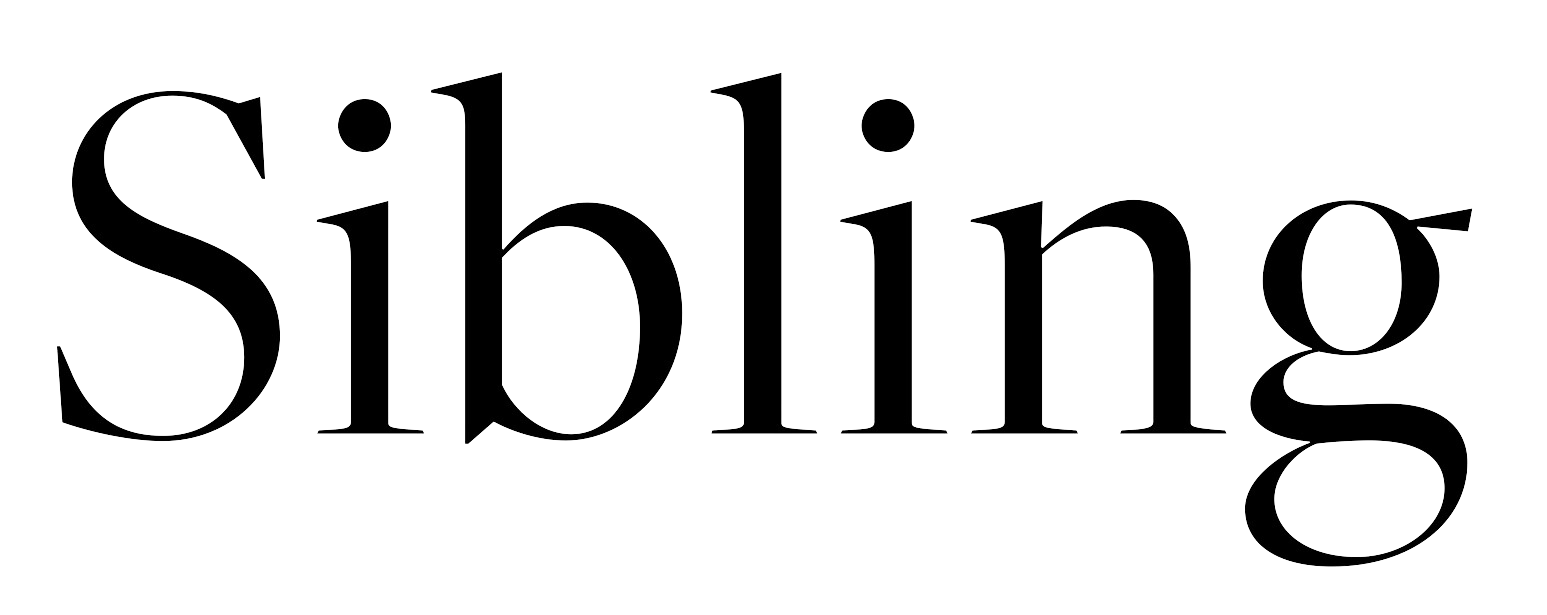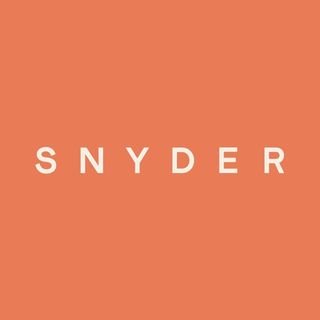(Re)Direction: Michael Nolan, From Magazines to Design for Film & Television
/(Left) Michael nolan in the office he shares with a colleague and fellow film-designer. On the wall behind him is work created for practice, as well as props created for movies. (Right) ebay is a great source for the sort of reference material seen here. / Photos: Judith Nolan
Welcome to (Re) Direction, an ongoing miniseries of 1:1 interviews that examines how all of the many skills we learn at magazines can be put to good use in other industries too! First up is Munich-based Michael Nolan, who spent the beginning of his career designing for various publications in Germany until he had a life-changing conversation. Now, his deep knowledge of typography, layouts and design history is a vital part of his new job as a designer for film and television.
“homework” michael created for the annie atkins workshop
Tell me a little bit about how your career path took you to magazines. Was this a field you were always interested in?
I studied communication design in Wiesbaden, Germany. For a long time, I didn’t quite know where I would end up after graduation because I was drawn to so many fields (illustration, photography, and print design). Towards the end of my studies I took part in an editorial design workshop put on by Petra Esveld, who was art director at the Dutch version of Elle Magazine. The workshop was great and at the time I thought that magazine design might be perfect for me because it combined my varied interests.
After graduating, I worked full-time in magazines for several years, starting out as designer and working my way up to deputy art director. Later, I freelanced for digital and print outlets.
I never regretted my decision to go into magazines. I learned a ton and was able to try my hand at a lot of things, like doing illustrations and working on replica apps.
What about magazines did (and perhaps do) you find particularly appealing?
I've always enjoyed storytelling. At magazines, I was able to collaborate with journalists to figure out how to best to get a story across to the reader. What I particularly loved were the feature stories at GQ Germany; working conceptually on openers, being able to play around and having the time to be very detail-oriented.
Interestingly, I noticed that I was doing something back then that I now do a lot in my current job. Often, I was inspired by a shoot or headline to work in a historic graphic style. For example, an opener could look like a vintage champagne-bottle label, an airline ticket, or medication packaging from the 60s.
michael started his career as a magazine designer (above layouts created for gq Germany). his love for typography translated well to his new job.
What led you to pivot away from publication design and to graphic design for film? Can you remember a single decisive moment, or was it a long slow-mo good-bye?
I can actually pinpoint a decisive moment about five and a half years ago that finally led me away from editorial design to my new field of graphic design for movies. I was freelancing for a magazine and during my lunch break a colleague told me that she’d recently done some design work for a movie and really enjoyed it.
I had heard about this field in passing before but had never looked into it in any depth. After we had talked for a bit, I thought to myself that this job sounds incredibly versatile and interesting. And I'm a huge fan of movies and TV shows anyway.
Tell me about the thought process that led you to what it is that you currently do. Did you consider other options, or was it very clear where you wanted to go?
I had also been thinking about going into UI/UX design. After creating replica apps for magazines, I thought that might be an option. But when I found out about design for film, it completely pushed that plan to the sidelines.
While I was researching the job, what and whom you need to know, I kept coming across two names: MinaLima, the design studio that did the graphics for all the Harry Potter films, and Annie Atkins, who created the designs for Wes Anderson's "Grand Budapest Hotel," among many others.
When I saw what wonderful work could be done in this industry, I was hooked. Fortuitously, a few weeks later, Annie was offering a weekend workshop in her native Dublin called "Graphic Design for Filmmaking". The two-day workshop allowed me to get an overview of the job to see if I wanted to work in this field. Annie also gave us some hugely helpful practical instruction, like how to age paper, how to make a vintage passport from scratch and legal pitfalls to keep in mind, to mention just a few. The homework that rounds out the workshop allowed me to produce my first pieces for my film-graphics portfolio, complete with feedback from Annie.
When I told a friend about taking part in this workshop and my interest in working for films, she gave me a small job in a project she was working on: I designed two book covers for the first season of the German-Austrian thriller series “Pagan Peak”. After that she and I worked on a first small movie together (“Hannes”), then a Netflix movie (“Freaks”), and after that the second season of “Pagan Peak" where I now had lots to do.
In the early days, I still worked for publishers and did the film stuff on the side. But soon, more and more requests from increasingly bigger and more complex film productions came rolling in. Projects where I would be booked five days a week for several months.
About two years ago, a prop master whom I had already worked with asked me if I would like to do the graphics for a movie about the Claas Relotius scandal called “Tausend Zeilen”/“A Thousand Lines”. Retolius was a reporter for the German news magazine "Der Spiegel” who had fabricated large parts of his articles.
Graphics for set decoration created for the movie “Tausend Zeilen” (English title: “A thousand lines”).
The project was screaming my name because it was clear that there would be a lot of editorial design needed. An entire fake “Der Spiegel”—in the movie called "Chronik”—had to be developed with hundreds of pages of magazine content, including all of the ads. In general I found the project very exciting, of course, due to my publishing experience.
To take this on, I had to give up a bigger editorial job. This cemented my decision to focus exclusively on films. In fact, I haven't done anything else since.
Explain to us what your work currently entails. Did you have to acquire a whole new skill set? Or did some of the things you learned at magazines transfer to your new job? If so, which ones?
The range of tasks for a film graphic designer is very large. First and foremost, you create all of the graphic props needed for the set design. You could be working for contemporary or historical or science fiction movies. Overall, I take on a lot more varied tasks now than I did in editorial design. For example, image research, editing and artwork creation are often part of my job. I write many of the smaller texts and headlines myself. Additionally, research (especially for historical films) and coordination with the legal department are two major areas of responsibility.
A "script breakdown" is used to work out what exactly needs to be designed for the film. That can be posters hanging on the walls, store fronts, logos for companies featured in the film, book covers, record covers, drink labels, product packaging, newspapers, magazines, certificates, documents and even flooring. But also handmade stuff, like letters, sketches, children's drawings, and notebooks. Depending on your skill set you also do calligraphy, illustration or graphical user interfaces (spaceship navigation screens in science fiction movies and shows, for example).
Over the years I’ve created a range of interesting items including taxidermy drawings of forest animals, logos for secret societies (for two different productions), vintage puzzle packaging, lawyer faxes from the 80s, the shopfront of a peep show in Hamburg in the 80s, and children's drawings of a crime suspect, among many others.
taxidermy sketches, childrens’ drawings and leather diary (plus logo) designed for the tv show “Der Pass” (English Title: “Pagan Peak”). Michael created agatha Christie’s imaginary passport as a personal project.
My editorial experience helps me a lot. I’ve had to create many fake magazine covers and spreads as well as newspaper pages, tabloid magazine covers, brochures, flyers and other print products. A sense for composition and typography is incredibly helpful. An eye for good photography and illustration also helps, as I'm often responsible for image research.
In addition to skills gleaned from workshops and the web, I learn many things on the job. For example, messages in film have to be conveyed clearly and quickly because the amount of time they are seen on screen is often super short. For example that could mean that you have to make magazine covers very concise. Headlines a bit bigger than you would make them for a real magazine, no distracting details, etc.
With every film, you may be presented with a set of tasks that you as a designer have no experience with. Especially with historical films, you have research how things were produced back then and how you can imitate these characteristics quickly and cost-effectively with current printing and production techniques.
strip-joint graphics created for the amazon Prime Series “luden” (English title: “The Pimp”).
If you could chart out your trajectory until retirement (if you believe in retirement), what are important stations ahead for you?
I really enjoy my job and can well imagine continuing in this vein for many years to come. It's a definite plus that you can learn new skills with paid work. I also have the feeling that it's a good area in design to grow older with. You not only gain skills and experiences that come in handy again and again, but also a library of physical objects you’ve already created that you might be able to use for similar jobs.
On the other hand, the job of graphic designer for film can also be very stressful. You have long days, an insanely high workload, a lot of fires to put out because things were rewritten in the script, or requirements change and problems have to be solved.
And, unfortunately, this industry is not particularly family-friendly. As father to two kids, I do sometimes yearn for an office job with regular working hours, where you can completely switch off after work. I often also work weekends and late into the night.
Logo for “Brenninger's” bar in the movie “Hannes” / Photo: © STUDIOCANAL GMBH, LAILAPS FILMS GMBH
Do you miss magazines? If so, what about them? If not, why not?
Definitely. In film, everything always has to happen very quickly, and I often don't have time to really polish things and make them beautiful. You have to get it done and sometimes you have to cut corners; it may well be that it's only visible for two seconds and blurry in the background anyway. Magazines can be tweaked until every graphic element is just right. I even miss fine-tuning rags and kerning.
I also always liked the atmosphere in editorial offices, story meetings and working with editors–even the tug-of-war over character counts and image sizes! As far as designing goes, in film you're often more or less on your own. You tend not to have any interaction with other graphic designers, so I share an office with someone else—also a former magazine designer—in the same industry. That way we can also pool our skills and exchange ideas.
logo created for a prop used in the movie “Hannes”
What would your advice be to young editorial designers looking to enter the film market? Is it advisable, for example, to pick up as broad a skill set as possible along the way? How would you go about acquiring such a skill set, do you have any tips?
If you want to do this, it’s not a bad idea to live in a city where many movie and TV productions are actually being made. It's not a job you can only exclusively do remotely. Often, people want you to work on site.
I think it also helps to have a broad range of interests, to be able to do a little bit of everything. Being able to draw and illustrate or do calligraphy helps in the profession is a definite plus (though not a requirement). For many jobs, it's also good to know how to do photo retouching, for example, to retouch an actor into an existing stock image.
In the United States, you need to have a demonstrable skill set to join one of the unions.
This is an up-and-coming area of design. Annie Atkins, for example, wrote a very a popular book about the topic that was published by Phaidon not too long ago, and she has a Domestika course coming out in six months. There are lots of workshops and talks happening now. If a trip to Ireland for a workshop is not an option, other film designers also offer guidance. Designer Leah Spencer assembled a great PDF with information for all designers who want to get their start designing for film and TV in the United States.
Follow Michael Nolan on Instagram to see more of his work @michael_nolan_graphic_props
